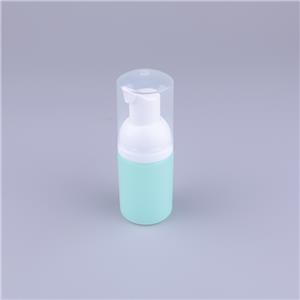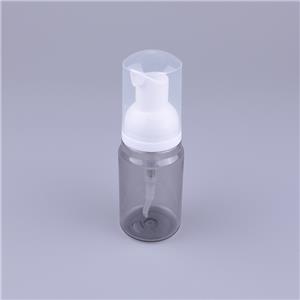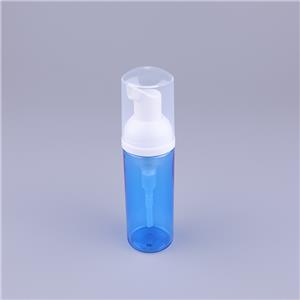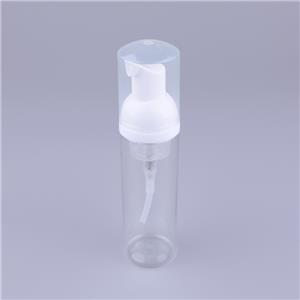- Home
- >
- News
- >
- Public Information
- >
- Temperature resistance of plastics: from basic principles to practical applications
Temperature resistance of plastics: from basic principles to practical applications
The temperature resistance of plastics is the core indicator for measuring their physical, chemical, and mechanical stability under different temperature environments, which directly determines the application boundary of materials. Whether plastic can maintain stable performance at specific temperatures is the key basis for material selection, from daily drinking cups to high-temperature resistant components of space shuttles. A deep understanding of the essence, evaluation system, and influencing factors of plastic temperature resistance is of great significance for product design, process optimization, and safe use.
1、 Basic concepts and evaluation indicators of plastic temperature resistance
The temperature resistance of plastics is not a single numerical value, but a comprehensive characteristic covering multiple dimensions, reflecting the behavior of materials under temperature changes.
Core evaluation index system
The following indicators are commonly used in the industry to quantify the temperature resistance of plastics:
Hot deformation temperature (HDT): The temperature at which a material undergoes 0.25mm deformation under a specified load (usually 1.82MPa or 0.45MPa), reflecting short-term heat resistance. General plastic HDT is mostly at 60-100 ℃, such as PP at about 100 ℃ (0.45MPa); Engineering plastics generally exceed 120 ℃, such as PA66 reinforcement grade reaching 250 ℃; Special plastics such as PEEK can reach 315 ℃.
Vicat softening point (VST): The temperature at which a 1mm ² indenter penetrates a material 1mm under a specific load (50N or 10N), which is closer to the actual scenario of low-speed loading. The Vicat softening point of PVC is about 75-85 ℃, while that of PC reaches 140-150 ℃.
Continuous use temperature (CUT): The highest temperature at which the performance retention rate of a material is not less than 50% after long-term use (usually 10000 hours), which is the closest indicator to practical applications. The continuous use temperature of PE is 60-80 ℃, PPS is 200-220 ℃, and PI can reach over 260 ℃.
Brittle temperature: The temperature at which a material loses its toughness and undergoes brittle fracture at low temperatures, measuring its low-temperature tolerance. The brittleness temperature of PE is as low as -70 ℃ or below, while PS is about -20 ℃, which limits its low-temperature application.
These indicators need to be used in combination: for example, the HDT of PC is 130 ℃, but the continuous use temperature is only 120 ℃, indicating that short-term heat resistance is better than long-term performance; The HDT of PTFE is only 120 ℃, but its continuous use temperature can reach 260 ℃. Due to its stable molecular structure, it is suitable for long-term high-temperature environments.
The Influence Mechanism of Temperature on Plastic Properties
Temperature affects plastic properties by altering the molecular motion state:
Low temperature zone (below Tg): Molecular chains freeze, the material is in a glassy state, with high rigidity but high brittleness. When the temperature drops below the embrittlement temperature, molecular chains cannot absorb impact energy through segment motion, and the material is prone to fracture.
Glass transition zone (near Tg): Molecular chains begin to move, and the material transitions from a glassy state to a highly elastic state, with a sharp decrease in modulus (usually by 3-4 orders of magnitude) and significant size changes (increase in linear expansion coefficient).
Melting zone (above Tm, for crystalline plastics): The crystalline structure disintegrates, the material becomes viscous, and loses its mechanical strength. Amorphous plastics have no obvious Tm and gradually soften until they flow with increasing temperature.
High temperature aging zone: Prolonged exposure to temperatures above Tg leads to oxidative degradation or cross-linking of molecular chains, resulting in irreversible degradation of mechanical properties. For example, when ABS is used for a long time at 100 ℃, its impact strength decreases by 10% -15% annually, due to the oxidation of the butadiene rubber phase.
2、 Key factors affecting the temperature resistance of plastics
The temperature resistance of plastics is determined by their molecular structure, aggregate structure, and external environment, and can be significantly improved by regulating these factors.
The core role of molecular structure
Molecular structure is the fundamental determinant of temperature resistance:
Main chain rigidity: Molecular chains containing rigid groups such as benzene rings and heterocycles have excellent temperature resistance. For example, the main chain of PI (polyimide) contains an imide ring and can be continuously used at a temperature of 260 ℃; The PE main chain is a flexible carbon carbon single bond with lower temperature resistance.
Intermolecular forces: Polar groups (such as amide and ester groups) enhance intermolecular forces and improve heat resistance through hydrogen bonding or dipole interactions. PA66 forms hydrogen bonds due to amide groups, and HDT is over 50 ℃ higher than PE.
Crosslinking degree: Thermosetting plastics (such as phenolic resins and epoxy resins) form a three-dimensional network through cross-linking, without melting state, and have better temperature resistance than similar thermoplastic plastics. For example, the continuous use temperature of cross-linked PE is 30 ℃ higher than that of ordinary PE.
Molecular weight and distribution: Plastics with higher molecular weight have stronger resistance to thermal deformation (tighter chain entanglement), but excessively high molecular weight can lead to processing difficulties; Narrow molecular weight distribution helps to improve heat stability.
The Influence of Aggregation Structure and Additives
Crystallinity: Crystalline plastics usually have better heat resistance than amorphous plastics because the molecular arrangement in the crystalline region is regular and can resist chain segment movement. For example, the HDT of HDPE (crystallinity 70%) is 20 ℃ higher than that of LDPE (crystallinity 50%); By using nucleating agents to increase the crystallinity of PP, its HDT can be increased by 10-15 ℃.
Filling and reinforcement: Adding reinforcing materials such as glass fiber and carbon fiber can significantly improve heat resistance. 30% glass fiber reinforced PA66, HDT increased from 80 ℃ to 250 ℃, due to the fiber bearing load, limiting molecular chain movement; Adding sheet-like fillers such as mica can improve dimensional stability by reducing the coefficient of linear expansion.
Stabilizers: Antioxidants (such as hindered phenols) inhibit oxidative degradation at high temperatures, UV absorbers reduce photo thermal aging, and can extend the service life of plastics in high temperature environments. For example, PP with 1% antioxidant 1010 can extend its thermal aging life from 1000 hours to 5000 hours at 120 ℃.
The collaborative impact of external environment
Load conditions: The mechanical properties of plastics at high temperatures are sensitive to loads, and at the same temperature, high loads can lead to earlier deformation. For example, POM has an HDT of 110 ℃ under a load of 0.45MPa, but only 85 ℃ under a load of 1.82MPa.
Medium environment: When in contact with media such as oil and solvents, high temperatures can accelerate material swelling or degradation. For example, PA6 will absorb water and swell in water at 100 ℃, resulting in a 50% decrease in strength, while its temperature resistance is more stable in dry environments.
Time factor: Short term high temperature (such as steam disinfection) has a smaller impact on plastics than long-term high temperature. PC can withstand steam disinfection at 130 ℃ (short-term), but the continuous use temperature should not exceed 120 ℃.
3、 Temperature resistance range and typical applications of various plastics
The temperature resistance of different plastics varies significantly, forming a temperature application spectrum covering -270 ℃ to 400 ℃, meeting diverse needs from deep cold to extreme high temperature.
Temperature resistance range of general plastics
Universal plastics have moderate temperature resistance and are suitable for conventional environments
Polyethylene (PE): HDT 40-70 ℃, continuous use temperature 60-80 ℃, brittleness temperature -70 ℃ to -100 ℃. Low density PE (LDPE) has lower temperature resistance, while high-density PE (HDPE) has slightly better temperature resistance due to its high crystallinity. Mainly used for room temperature packaging, water pipes, etc., cannot come into contact with boiling water.
Polypropylene (PP): HDT 100 ℃ (0.45MPa), continuous use temperature 100-120 ℃, brittleness temperature -15 ℃ to -30 ℃. It is the only universal plastic that can withstand boiling water and is widely used in tableware, water cups, and hot water pipes, but it is prone to brittleness at low temperatures and is not suitable for freezing environments.
Polyvinyl chloride (PVC): HDT of hard PVC is 70-80 ℃, with a continuous use temperature of 60 ℃; Soft PVC has lower temperature resistance (below 50 ℃) due to the migration of plasticizers. Used for building pipes and wire insulation layers, it is necessary to avoid high temperature contact to prevent the precipitation of plasticizers.
Polystyrene (PS): HDT 70-90 ℃, continuous use temperature 60 ℃, brittleness temperature -20 ℃, obvious low-temperature brittleness. Mainly used for packaging and toys, not suitable for high temperature scenarios.
ABS: HDT 80-100 ℃, continuous use temperature 60-80 ℃, brittleness temperature -40 ℃, comprehensive temperature resistance better than other general plastics. Suitable for home appliance casings and car interiors, but with a long-term usage temperature not exceeding 80 ℃.
Temperature resistance performance of engineering plastics
The temperature resistance of engineering plastics has significantly improved, meeting the needs of industrial environments
Polyamide (PA, Nylon): The HDT of PA6 is 60-80 ℃, and the continuous use temperature is 100 ℃; PA66, due to its high crystallinity, has an HDT of 70-90 ℃ and can be used continuously at a temperature of 120 ℃. After being reinforced with 30% glass fiber, the HDT is increased to 200-250 ℃, and the continuous use temperature reaches 150 ℃. It is used for automotive engine peripheral components and high-temperature oil pipes.
Polycarbonate (PC): HDT 130-140 ℃, continuous use temperature 120 ℃, brittleness temperature -40 ℃, with both heat resistance and impact resistance. Used for baby bottles, car headlight lampshades, and electronic device casings, but it is prone to hydrolysis due to long-term high temperatures and should be avoided in humid environments.
Polyoxymethylene (POM): HDT 110 ℃ (1.82MPa), continuous use temperature 100 ℃, outstanding fatigue resistance. Suitable for manufacturing transmission components such as gears and bearings, it can withstand 120 ℃ in a dry environment for a short period of time.
Polybutylene terephthalate (PBT): HDT 210-220 ℃ (reinforced grade), continuous use temperature 140 ℃, excellent electrical insulation. Used for electronic connectors and coil frames, suitable for working environments with high temperature and humidity.
Extreme temperature resistance of special plastics
Special plastics can cope with extreme temperature environments:
Polytetrafluoroethylene (PTFE): HDT is only 120 ℃, but its continuous use temperature can reach 260 ℃, and it can withstand 260 ℃ in the short term. Its brittleness temperature is -270 ℃, making it the plastic with the widest temperature range. Resistant to chemical corrosion and non stick, used for non stick pot coatings, high-temperature seals, and cryogenic equipment.
Polyether ether ketone (PEEK): HDT 315 ℃, continuous use temperature 260 ℃, still maintains 70% room temperature strength at 200 ℃. Used for aerospace structural components, medical implants, and downhole tools in oil fields, it can withstand steam disinfection and chemical corrosion.
Polyimide (PI): Continuous use temperature range of 260-300 ℃, short-term temperature resistance up to 400 ℃, stable performance within the range of -269 ℃ to 300 ℃. Used for spacecraft thermal protection layer, flexible circuit board, and high-temperature bearing cage, it is currently one of the best temperature resistant plastics.
Polyphenylene sulfide (PPS): HDT 260 ℃, continuous use temperature 200-220 ℃, flame retardant and resistant to chemical corrosion. Used for automotive exhaust pipe insulation and electronic welding carrier board, it can withstand high temperatures of 260 ℃ caused by wave soldering.
Liquid crystal polymer (LCP): Continuous use temperature of 180-240 ℃, extremely low coefficient of linear expansion, excellent dimensional stability. It is irreplaceable in high-temperature precision components such as 5G antennas and chip packaging.
4、 Testing methods and standards for temperature resistance of plastics
Accurately evaluating the temperature resistance of plastics requires adherence to standardized testing methods. Different standards have slightly different requirements for testing conditions, and the results should be carefully compared.
Hot deformation temperature (HDT) test
According to ISO 75 and ASTM D648 standards, the core parameters include:
Sample size: Typically a strip sample measuring 80mm x 10mm x 4mm.
Load: divided into two levels -1.82MPa (applicable to rigid materials) and 0.45MPa (applicable to flexible materials).
Heating rate: 120 ℃/h (ISO) or 2 ℃/min (ASTM), close to the slow heating scenario in actual use.
Deformation amount: When the midpoint deflection of the sample reaches 0.25mm, record the temperature, which is called HDT.
Testing precautions: HDT is a relative indicator that only reflects short-term heat resistance under specific loads and cannot be directly equated with operating temperature; The HDT of crystalline plastics is affected by cooling rate and requires standardized molding conditions to ensure comparability of results.
Vicat softening point (VST) test
According to ISO 306 and ASTM D1525 standards, the key parameters are:
Pressure needle: a flat headed needle with a cross-sectional area of 1mm ².
Load: 50N (VST/A) or 10N (VST/B), with 50N being more commonly used.
Heating rate: 50 ℃/h or 120 ℃/h, the former is closer to the actual heating situation.
Judgment criteria: The temperature at which the pressure needle penetrates 1mm into the sample.
The difference between VST and HDT: VST focuses more on the softening behavior of materials and is more sensitive to thermoplastic materials; HDT reflects the structural load-bearing capacity and is more suitable for evaluating the heat resistance of structural components. VST of the same material is usually 10-30 ℃ higher than HDT.
Long term thermal aging test
Long term thermal aging tests (ISO 2578, ASTM D3045) are required to evaluate the continuous use temperature:
Test temperature: Select 3-4 points above the expected operating temperature (such as 120 ℃, 140 ℃, 160 ℃).
Testing cycle: up to 10000 hours, with regular sampling and testing of tensile strength, impact strength, etc.
Data processing: The Arrhenius equation is used to extrapolate to the temperature at which the performance retention rate reaches 50% after 10000 hours, which is the continuous use temperature.
Attention should be paid to accelerating aging: Excessive temperature may trigger degradation mechanisms that are different from actual use (such as cross-linking rather than oxidation), leading to distorted extrapolation results. Typically, the testing temperature should not exceed 2/3 of the material's Tm or decomposition temperature.
Low temperature brittleness test
According to ISO 974 and ASTM D746 standards, determine the brittleness of materials at low temperatures:
Sample: usually made of sheet or pipe, selected according to the product type.
Testing method: Test the sample failure rate at different low temperatures through impact or bending.
Judgment criteria: The temperature at which 50% of the samples undergo brittle fracture is the embrittlement temperature.
This test is particularly important for packaging materials and outdoor products, such as PE film, which needs to ensure that it does not become brittle at -40 ℃ to adapt to transportation in cold regions.
5、 Application adaptation and engineering practice of plastic temperature resistance
In practical applications, it is necessary to comprehensively consider the temperature resistance of plastics based on their usage scenarios to avoid failure caused by temperature issues.
Temperature resistance requirements and material selection in different fields
Food contact field: It is necessary to meet both temperature resistance and safety requirements. Microwave oven containers commonly use PP (resistant to 120 ℃), water dispenser components use PC (resistant to 100 ℃), and non stick pan coatings use PTFE (resistant to 260 ℃), all of which require food grade certification (such as FDA, GB 4806).
Automotive industry: Engine compartment components should be resistant to 150-200 ℃ (such as PA66 reinforced grade), cockpit components should be resistant to 80-120 ℃ (such as ABS/PC alloy), and ultra tough PP or PA should be used in low-temperature environments (-40 ℃) to avoid brittle fracture.
Electronic appliances: Connectors and coil frames need to withstand 120-150 ℃ (such as PBT reinforced grade), LED heat sinks need to withstand 150-200 ℃ (such as PPS), and high-frequency components need low dielectric loss LCP (resistant to 200 ℃).
In the medical field, steam disinfection components need to be resistant to 134 ℃ (such as PC, PEEK), PTFE is used for low-temperature refrigeration equipment (resistant to -200 ℃), and implanted instruments need to be resistant to long-term body temperature (37 ℃) and degradation (such as PEEK).
Aerospace: The internal components of the cabin are resistant to 120 ℃ (such as PEEK), and the engine surroundings are resistant to 250-300 ℃ (such as PI). The space environment needs to withstand sudden temperature changes from -200 ℃ to 150 ℃ (such as PTFE, PI).
Engineering methods to enhance the temperature resistance of plastics
When the temperature resistance of existing materials is insufficient, optimization can be achieved through the following methods:
Material Composite: Adopting a multi-layer structure, such as using PEEK with good temperature resistance for the inner layer and low-cost PP for the outer layer, balancing performance and cost.
Structural design: increase wall thickness or use reinforcement bars to enhance the load-bearing capacity of the structure at high temperatures; Avoid sharp corner design and reduce high-temperature deformation caused by stress concentration.
Process control: Increase the mold temperature during injection molding to promote the formation of a more complete crystal structure in crystalline plastics and enhance heat resistance; Pre dry moisture absorbing materials such as PA and PC to avoid high-temperature hydrolysis.
Surface treatment: Apply high-temperature resistant coatings (such as ceramic coatings) to enhance surface temperature resistance while maintaining the toughness of the substrate.
Typical Failure Cases and Prevention
PC cup cracking: Long term use of boiling water (100 ℃) causes PC hydrolysis, molecular weight decrease, and loss of toughness. Prevention: Use PP or Tritan (copolyester) cups instead, the latter being resistant to temperatures of 100 ℃ and hydrolysis.
Automotive ABS sensor failure: The ambient temperature in the engine compartment reaches 120 ℃, exceeding the continuous use temperature of ABS, resulting in material aging and brittleness. Solution: Replace with temperature resistant ABS or PA66 reinforced grade.
PVC water pipe deformation: Direct sunlight in summer causes the temperature of the pipe to rise to 70 ℃, exceeding the HDT (70 ℃) of PVC, resulting in pipe sagging. Prevention: Use UPVC (unplasticized PVC) or PE-RT pipes to improve heat resistance.
The temperature resistance of plastics is the result of the combined action of materials, structure, and environment. There is no "absolutely temperature resistant" plastic, only the choice of "suitable scenarios". With the advancement of material modification technology, the temperature resistance boundary of plastics is constantly breaking through through through molecular design, nanocomposites and other means, such as graphene reinforcement




